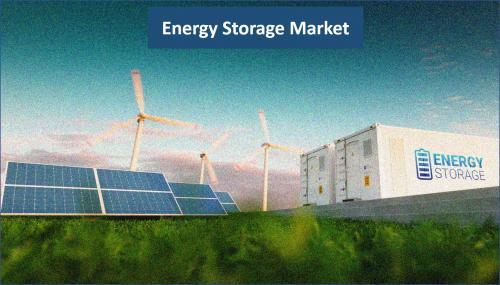How is Rising Requirement for Unconventional Energy Sources Driving Energy Storage Market?

Various factors are contributing to the increasing demand for unconventional sources of energy, including the rapid urbanization, degradation of environment due to the increased usage of fossil fuels, and ready availability of these sources. Unconventional sources of energy, such as wind energy, hydro power, and solar energy, can produce clean energy and also have the potential to match the surging energy demand across the globe. Moreover, these renewable energy technologies have variable outputs, due to which storage technologies have great potential of smoothing out the power supply from these sources. This is further driving the requirement for energy storage systems. These systems have the capability to discharge power to the grid quickly, whereas fossil fuel sources take longer time to ramp up.
Energy storage system enables the integration of
renewable energy and provides resilient and clean supply of energy. As per a
study conducted by P&S Intelligence, in the global energy storage market,
the installed capacity was 6,275.4 MW in 2017 and is expected to go up to
51,426.0 MW in 2023, growing with a 42.5% CAGR in the coming years. The several
types of energy storage systems are chemical, electrochemical, thermal,
mechanical, and others (which include biological and fossil fuel storage). Out
of these, the mechanical energy storage systems were the most in demand during
2013–2017. This was because these systems can be implemented in the utility
systems on a large scale and utilized in a high demand scenario for dealing
with the irregularities of the demand or supply. Mechanical energy storage
systems are further of different types: compressed air energy storage, pumped
hydro storage, liquid air energy storage, and others (including flywheel and
torsion or plate spring).
Get the market analysis report at: http://bit.ly/377Y7t4
The energy storage market is categorized into backup supply, arbitrage, ancillary services, fuel saving, and others (which include running mills and air conditioning). Among these, the largest application area for energy storage systems was ancillary services during 2013–2017 and is further predicted to retain its position in the near future. These services are mandatory for supporting the transmission of electric supply from the generation site to the customers because of transmitting utilities and control areas within those control areas for maintaining reliable operations of the interconnected transmission system. The application area of arbitrage is projected to witness the fastest growth rate in the coming years.
The growing adoption of energy storage systems in the transportation sector is expected to increase their demand in the near future. The transportation sector is growing rapidly because of the rise in the economic status of consumers, which is resulting in increased demand for advanced vehicles. Conventionally, the manufacturers did not have the technology for making a car efficient, in terms of energy conservation. But now, with the changing research and development scenario, manufacturers are increasingly focusing on improving their technology in order to make vehicles more efficient, which, in turn, has led to the growing adoption of storage technologies in different components.Post Your Ad Here
Comments